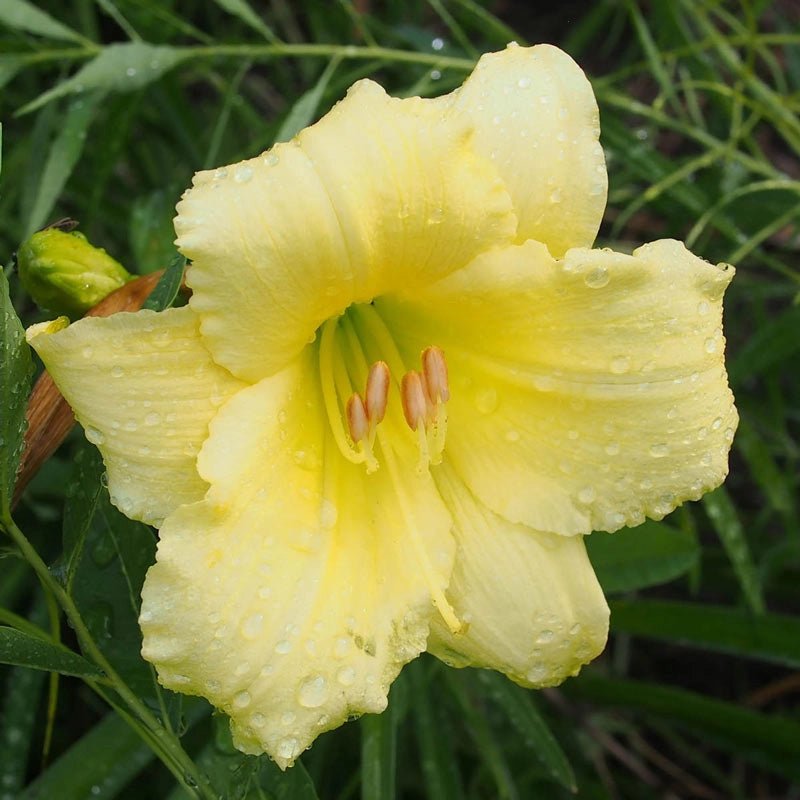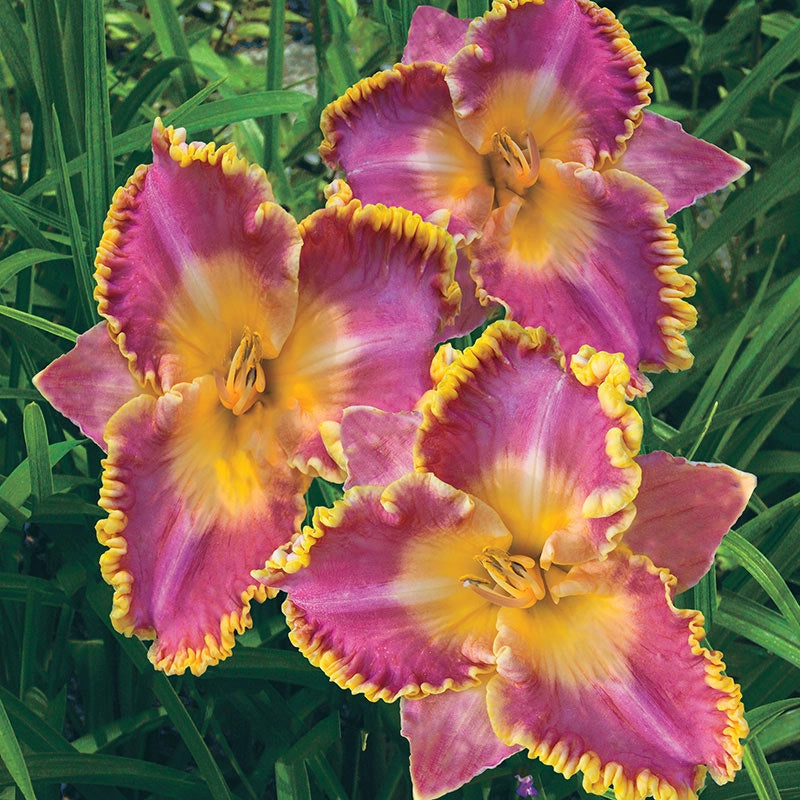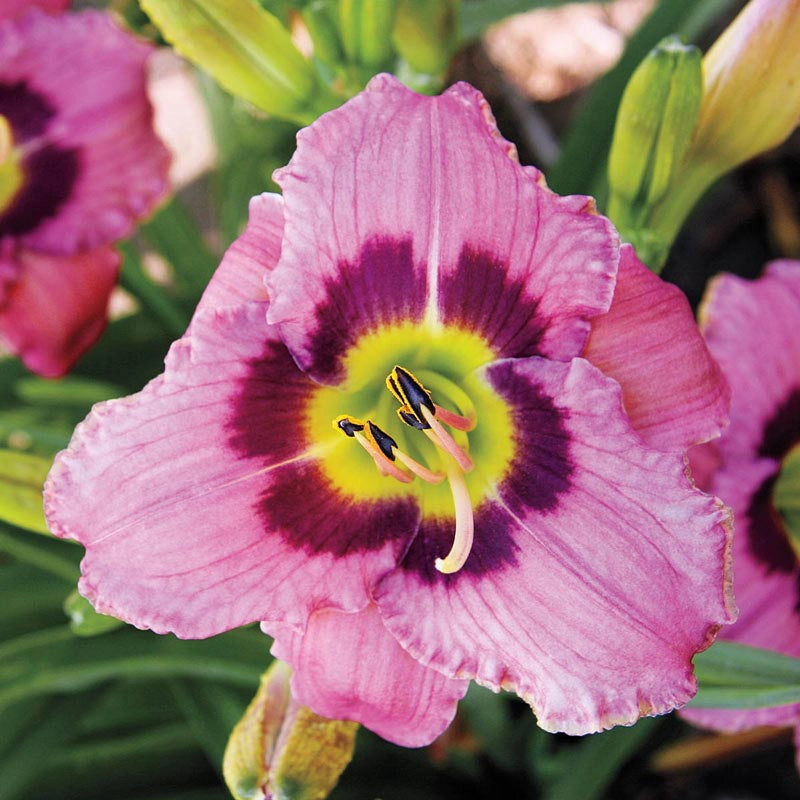27 products
Daylilies, also known as hemerocallis, are sun-soaking, classic perennials that exhibit a wide variety of hues, textures, and blooming qualities. Hemerocallis is derived from two Greek words meaning "beauty" and "day", which summarizes the sporadic blooming behavior of many daylily varieties.
The carefree and long-lasting wonder of daylilies will leave you in awe from spring to fall. For more information on planting daylilies, check out our gardening video library.
Questions about Daylilies
Choosing a daylily might be the most difficult part of your investment, as planting and maintaining them is nearly effortless. Buy daylilies with high confidence in their drought, pest, and disease resistance; as well as their ability to adapt to various light and soil conditions. The carefree and long-lasting wonder of daylilies will leave you in awe from spring to fall. Shop Spring Hill's daylilies and rely on them to lend an elegant touch to your plantings in all conditions.
When to plant daylilies:
Daylilies are usually sold as spring–planted bare roots, and should be planted in very early spring when the weather is still cool. Springtime planting gives daylilies plenty of time to establish themselves before the following winter. Like most perennials, daylilies are at their hardiest when they have an established root system.
Some daylilies can be planted in fall, but should be mulched to prevent damage to their roots through the winter. In general, the earlier in the season you can plant daylilies, the better chance of success.
Where to plant daylilies:
Beloved for their stunningly long bloom time and frequent remonant characteristics, daylilies are available in such a wide array of styles that they're perfect for any landscape. Nearly all varieties require at least six hours per day of sunlight, and prefer well–drained soil—daylilies don't like wet feet.
Just starting to shop for the perfect daylily for your landscape? Already have a favorite variety, but you're not sure where to place it? When siting daylilies, consider the following:
Daylily height:
Daylilies are grown in a wide variety of heights. Standard daylilies grow two to three feet tall, and are perfect as a specimen planting or in the back of a border. Some very tall varieties can reach four, or even five, feet in height. Dwarf daylilies, conversely, can stand under twelve inches tall at their mature height. Dwarf species may be more suitable for front–of–border plantings, or in a woodland setting.
Daylily bloom time:
Consider the mixture of bloom times in the garden. Early season daylilies bloom in May or June, and may bloom again in fall. Mid–summer daylilies are also popular, and late blooming varieties will wait until August, or even later, to bloom. Plant a mixture of varieties to ensure that you'll never be without flowers.
Don't miss out on the parade of blooms that comes with reblooming daylilies. Reblooming daylilies typically have a main blooming period, followed by repeated blooms right up until frost sets in.
What type of foliage does your daylily have?
Consider your garden's winter appearance, and whether there are any spots that need spruced up with a bit of cold–weather interest. Evergreen daylilies hold their foliage color through winter, except in very cold climates, and may even produce new leaves in the colder months. On the other side of the spectrum are deciduous daylilies, which die back completely as winter approaches and sprout again in the spring. Semi–evergreen daylilies retain some, but not all, of their foliage through fall and winter. Semi–evergreen and evergreen daylilies may be the perfect choices to add color in sparse areas in your yard over the winter.
How to plant daylilies:
Daylilies are typically planted as bare roots or fans, and planting and spacing widths will depend upon size. For a medium–sized daylily plant, dig a hole in the soil to about a foot deep and two feet wide. Mount up soil in the center of the hole to just below ground level, and set the daylily plant with roots spreading down over the mound. Add a mix of soil and compost back around the daylily roots. When the hole is halfway filled, water in the plant well to remove any air pockets. Then, fill the hole completely.
How to care for daylilies:
Daylilies perform best when they're planted in full sun, preferably a minimum of six hours per day. With good light and fertile, well–draining soil, daylilies need very little care. Water them weekly during dry spells. A springtime application of a balanced fertilizer, like 5–5–5, or one slightly rich in phosphorus, like 5–10–5, can increase bloom performance. Apply the same in fall to help the plants prepare for winter. Be sure to apply fertilizer to the ground, and not directly to the leaves, stems, or flowers, as direct application can cause burning.
When to divide daylilies:
The best time to divide daylilies is at the end of the flowering season, in late summer. To divide daylilies, pull the root clump up by the stem. You may wish to soak the clump for a few hours to make division easier. Then, cut the stems back to a few inches above the crown. Use a garden fork to divide the clump, ensuring each new fan has leaves and roots. They should divide fairly easily after soaking.
Replant your new fans, and mulch over them before winter to ensure that the tender new plants are protected.
When to cut back daylilies:
Some daylilies remain green all winter, while some die back to the ground. At the end of the blooming season, deciduous daylilies can be cut back to two inches above the ground, including both the leaves and the scapes. Avoid "scalping" your daylily roots to give them a bit of protection over the winter.
When do daylilies bloom?
Most gardeners consider June peak "daylily season," and you'll see celebrations of daylilies through daylily festivals around the United States. However, daylilies are much more than summertime plants. Some varieties of early bloomers start in April. Other daylilies have delayed blooming seasons, especially in northern climates. Reblooming daylilies like the classic Stella de Oro start blooming in late spring, and produce blooms all the way through summer.
By choosing a selection of early dwarf varieties, classic summer daylilies, and a mix of remontant species, you'll keep your display of flowers bright and beautiful all season long. Extended time is a major selling point for daylilies. Each stem has several floral buds, so a daylily's blooms may last several weeks instead of several days.




